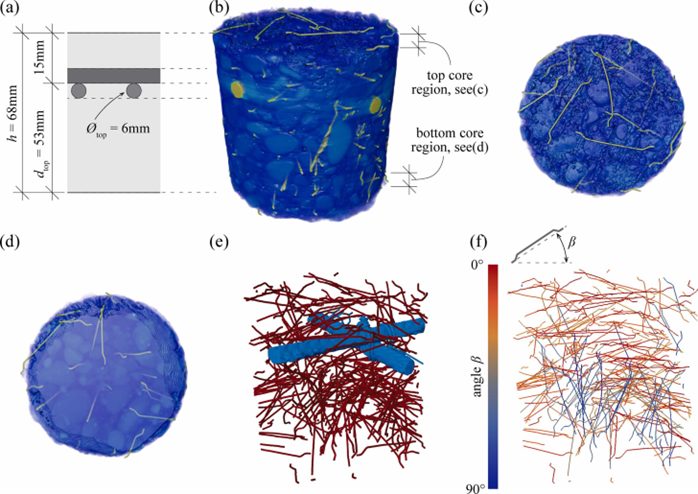The consequences for punching shear and flexural resistance

Author(s) : Diego Hernández Fraile, Enrico Faccin, Fausto Minelli, Giovanni Plizzari, Aurelio Muttoni
Journal : Engineering Structures
Editor : ELSEVIER
Year of publication: 2024
Description :
The use of steel fibre reinforced concrete (SFRC) is a well-known method for enhancing the punching and flexural resistances of flat slabs. The structural performance of SFRC elements depends significantly on the fibre distribution and orientation, which are typically unknown. One of the largest uncertainties regarding the performance and reliability of SFRC concerns the determination of its post-cracking mechanical properties in the real structural element, normally performed via standardised tests. However, due to differences in element sizes and casting procedures, and to the presence of rebars, the fibre spatial distribution and orientation in the standard specimens differ in general from those of the structural member. Several researchers have studied the correlation between the orientation of fibres and the mechanical performance of SFRC, yet tests were rarely carried out under representative conditions of the actual behaviour of the target structural member. The present paper analyses the spatial distribution and orientation of steel fibres in six SFRC flat slabs that were previously tested in concentric punching at the University of Brescia. The aim of this work is to analyse the fibre orientation and spatial distribution in structural elements. Cores were extracted from the specimens after the punching tests and scanned using micro-computed tomography (μ-CT) to reconstruct the fibre skeleton. The fibre arrangement was analysed focusing on the variation of the fibre spatial distribution and orientation through the slab thickness. A formulation to express the actual fibre dispersion in concrete is proposed, and effectiveness factors are defined to reflect the efficacy of fibres in punching shear and flexure, based on their location in the slab thickness. Pseudo-horizontal fibre orientations are found to be governing, with closer distributions to a 2D scenario for thicker slabs and higher fibre contents. Furthermore, the influence of flexural reinforcement on the fibre orientation has been observed to be significant. The observed fibre orientations are detrimental for the direct transfer of shear forces across cracks, but are favourable for enhancing the flexural capacity of the slab.